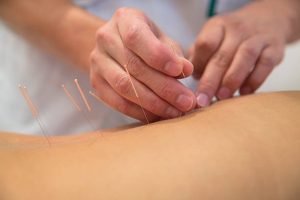In Traditional Chinese Medicine (TCM), “Xie(邪)” refers to a pathological factor or an external pathogenic factor that can disrupt the body’s balance and cause disease. It is often translated as “evil” or “pathogenic” in English.
Xie can be further classified into different types based on their characteristics and effects on the body. Some common types of Xie include:
- 1. Wind (Feng风): Wind is considered a primary pathogenic factor in TCM. It is associated with rapid changes, movement, and instability. Wind can cause symptoms such as tremors, spasms, dizziness, and itching.
- 2. Cold (Han寒): Cold refers to a pathogenic factor that causes a decrease in body temperature and slows down bodily functions. It can lead to symptoms such as cold limbs, aversion to cold, pale complexion, and pain that worsens with cold exposure.
- 3. Heat (Re热): Heat is an excessive and hyperactive pathogenic factor. It can cause symptoms such as fever, thirst, redness, inflammation, and rapid pulse.
- 4. Dampness (Shi湿): Dampness is a pathogenic factor associated with excessive moisture and stagnation. It can lead to symptoms such as heaviness, swelling, fatigue, and a feeling of stickiness or greasiness.
- 5. Dryness (Zao燥): Dryness refers to a lack of moisture in the body. It can cause symptoms such as dry skin, dry mouth, dry cough, constipation, and thirst.
- 6. Fire (Huo火): Fire is an intense and aggressive pathogenic factor. It can cause symptoms such as high fever, restlessness, irritability, redness, and inflammation.
Understanding Xie in TCM involves recognizing the specific pathogenic factors involved in a person’s condition and addressing them through appropriate treatment methods. TCM practitioners aim to restore the body’s balance and harmony by eliminating Xie and promoting the body’s natural healing abilities. This may involve herbal medicine, acupuncture, dietary adjustments, lifestyle changes, and other TCM modalities.
To defend against Xie, TCM focuses on strengthening the body’s defenses and restoring balance. Here are some ways to defend against Xie:
- Boosting the immune system: A strong immune system can help protect the body from external pathogens. This can be achieved through a healthy diet, regular exercise, adequate sleep, and stress management.
- Maintaining a balanced lifestyle: TCM emphasizes the importance of maintaining a balanced lifestyle to prevent the invasion of Xie. This includes maintaining a regular daily routine, avoiding excessive physical or mental exertion, and ensuring a proper work-rest balance.
- Protecting against external factors: TCM advises protecting oneself from external factors that can contribute to the invasion of Xie. This may involve wearing appropriate clothing for the weather, avoiding exposure to extreme temperatures, and maintaining good personal hygiene.
- Herbal remedies: TCM often uses herbal remedies to strengthen the body’s defenses and expel Xie. Different herbs have different properties and can be prescribed based on the specific symptoms and underlying imbalances.
- Acupuncture and moxibustion: These TCM techniques can help regulate the body’s energy flow and strengthen the body’s defenses against Xie. They involve the insertion of fine needles or the application of heat to specific points on the body.
It’s important to note that defending against Xie in TCM is not just about avoiding external pathogens but also about maintaining overall health and balance. Consulting with a qualified TCM practitioner can help determine the best approach for defending against Xie based on individual needs and conditions.

